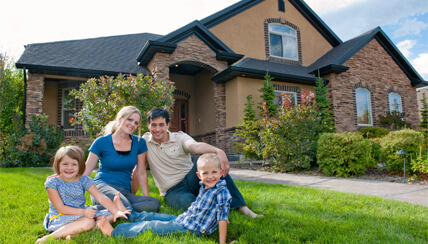Evaluating a Home
 At a time when reports of unknown clandestine methamphetamine labs, marijuana grow operations, excessive indoor allergen levels, and moldy homes appear in the news on a nightly basis, many parents or perspective apartment dwellers have been asking what can be done to reduce the chances of renting or buying a problem residence. If there has been a concerted effort by someone to cover-up a problem, it may be difficult to identify. There are however a number of things to look for in a potential residence that, if observed, may signal the potential purchaser or renter to think twice about continuing with the transaction.
At a time when reports of unknown clandestine methamphetamine labs, marijuana grow operations, excessive indoor allergen levels, and moldy homes appear in the news on a nightly basis, many parents or perspective apartment dwellers have been asking what can be done to reduce the chances of renting or buying a problem residence. If there has been a concerted effort by someone to cover-up a problem, it may be difficult to identify. There are however a number of things to look for in a potential residence that, if observed, may signal the potential purchaser or renter to think twice about continuing with the transaction.
The residence has a musty or moldy odor. Mold growing in a residence commonly produces a number of by-products that we frequently associate with a moldy or musty odor. Although some musty odors may not signal the presence of significant mold growth, a red flag should immediately go up if such an odor is noticed. This is true even if the odor is in the basement or some other area that you might believe should smell musty. Even basements and crawlspaces should be dry and not smell musty.
There is visible water damage in the residence. Water stains on a ceiling, floor, or wall indicate that water leaked into the residence or a broken pipe or sewer line has leaked inside of the residence. Even if no mold is observed to be associated with the water stain or damage, it is possible that mold has grown behind the walls or in the ceiling and some individuals may have allergic reactions to the mold, even though it can't be seen.
There are chemical or irritating odors in the residence. In some cases, new carpeting or freshly painted or remodeled residences may have irritating or chemical odors associated the work that was just completed. If that is not the case, it is possible that chemical storage or usage within the residence was not appropriate. The indiscriminate use of pesticides, methamphetamine labs, and other unwise use of chemicals within the residence can leave irritating odors in a residence. Frequently an individual's reaction to the odors will increase over time rather than decline. For this reason, choosing a house with an objective odor will likely be more of a problem in the future rather than less of a problem.
There is soiled carpeting in the residence. Although some marks on a carpet may not cause problems, stains may also indicate the recent presence of a pet that was not housebroken, water damage to the residence, the presence of a methamphetamine lab, or a multitude of other concerns. Carpets tend to hold chemicals, allergens, and pet dander that may be a concern for some individuals who are allergic.
There are unvented or poorly vented fossil fuel combustion devices in the residence. If a residence has its own furnace or hot water heater, it is a wise step to assure that these items are well vented to the outside. Unvented furnaces and hot water heaters can leak carbon monoxide into the residence and result in significant illness or even death. If furnaces, space heaters or water heaters are burning propane, natural gas, or any other fossil fuel, they should be properly vented to the outside. Any question should be cause for you to request an inspection from your utility company.
There is wrinkled flooring around the tub or beneath the sinks. Wrinkled flooring is a sign of water leakage that may have resulted in structural damage to the home as well as mold growth.
There is a white "hairy" material on the dirt in a crawlspace or on the walls of the basement. This is caused by soil that has calcium carbonate in it becoming wet. The water dissolves the minerals and when it evaporates leaves white crystals on the dirt. Even if the crawlspace is dry at the time that you evaluate the area, it has been wet in the past and may be wet again. Mold growth, musty odors, and structural damage can occur in residences with wet crawl spaces.
This information has been approved by Alison Welch, MS (April 2014).
